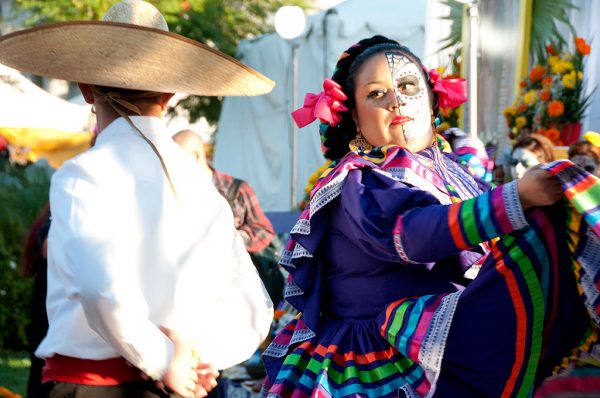Celebrating Día de los Muertos in NYC
October 26, 2017
If you think autumnal festivities are limited to Halloween and Thanksgiving, think again. Day of the Dead, or Día de los Muertos, comes around every year on the two days following Halloween: Nov. 1 and 2. Common misconceptions of this Mexican holiday may involve images of faces painted like colorful sugar skulls or gangly, leering skeletons, but Día de los Muertos is teeming with rich tradition and history; it holds its own weight in human history and is by no means “Mexican Halloween.”
Día de los Muertos has origins that predate Spanish colonization and is still celebrated by Mexicans and other Latin Americans to this day. Rather than being a solemn occasion for mourning the dead, Día de los Muertos seeks to welcome the deceased on their yearly visit home—families honor their dead loved ones with lively festivities and familial gatherings full of food, drinks and special traditions.
Altar-decorating is one of the most significant traditions of this multi-day holiday. It is common for Mexican families to build altars in their homes as a tribute to their deceased loved ones. These altars consist of various levels and are full of candles, papel picado (decorative paper), cempasúchil (marigold) flowers and photos of the dead.
If you’re intrigued by the idea of taking part in the festivities, but don’t know where to start, consider attending “Mano a Mano’s” Day of the Dead celebration taking place Oct. 27–29. This is a free event taking place at St. Mark’s Church in the East Village, which requires participants to register online at no cost. The event offers Mexican folk art, papel picado, sugar skulls and pan de muerto. If you attend, you can try your hand at making your own paper flowers and take part in decorating a communal altar. Musical entertainment by a mariachi group as well as other Mexican performers will also add to the celebratory spirit.
If you still haven’t gotten your fill of Día de los Muertos, the National Museum of the American Indian —located in the south side of Bowling Green in lower Manhattan—will host a free celebration on Oct. 28 12–5 p.m. There will be traditional dances performed by Cetiliztli Nauhcampa and interactive activities like decorating paper skull masks, decorating skeleton puppets and painting plaster skulls.
These festivities are sure to be vibrant and joyous, but they are more than mere entertainment. They are a form of preserving an ancient tradition that honors those who have reached the afterlife. Día de los Muertos is a yearly reminder to hold your loved ones—both the living and the dead—close to your heart. The cempasúchil flowers and candles that light the Día de los Muertos altars this November are sure to illuminate and rekindle the love between the living and the dead.












